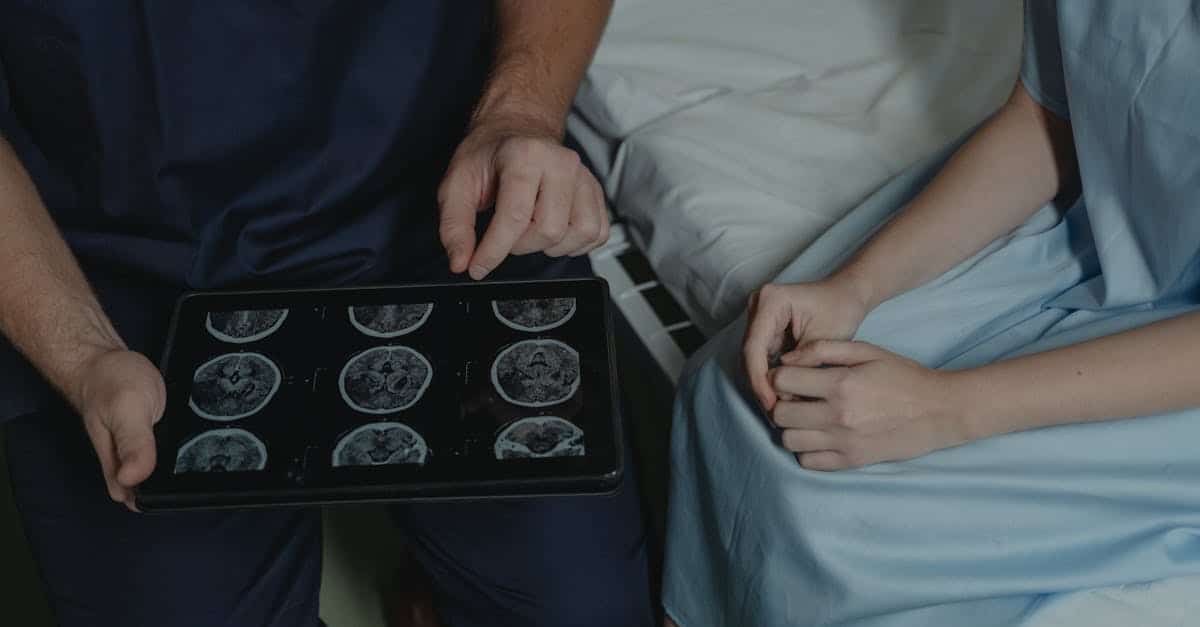The interpretation of results in interventional neurology represents a complex and multifaceted issue. Technological advancements, such as advanced imaging techniques, have significantly enhanced the visualization of brain structures. However, these tools also create challenges for practitioners who must accurately assess observations in a clinically ambiguous context at times. The interface between the pathophysiology of neurological diseases and the results of examinations can engender uncertainties, making a methodical and thoughtful approach crucial to ensure informed therapeutic decisions. Furthermore, the communication of results between medical specialties, such as radiology and neurology, must be optimized to minimize the risks of misinterpretation and improve outcomes for patients.

Interventional neurology is a rapidly expanding field that combines radiology and neurosurgery techniques for the diagnosis and treatment of neurological diseases. However, despite technological advancements and innovative techniques, the interpretation of results in interventional neurology presents several complex challenges that require meticulous attention. These challenges can be classified into several categories: the variability of results, the complexity of diseases, the integration of new technologies, and multidisciplinary communication.
First, the variability of results during interventional procedures can be influenced by factors such as individual patient anatomy, their overall health status, and comorbidities. Each patient presents unique characteristics that can modify the interventional approach and the interpretation of results. For example, differences in brain morphology can affect the visualization of structures and also influence the diagnosis of certain conditions such as vascular malformations or brain lesions.
Next, the complexity of neurological diseases presents a major challenge. Conditions such as stroke, epilepsy, or brain tumors require careful evaluation of imaging results and clinical data to guide treatment decisions. This includes the analysis of magnetic resonance imaging (MRI), computed tomography (CT), and other imaging modalities. The clinical data must be considered to establish an adequate interpretation. For instance, the clinical presentation of an ischemic stroke may vary depending on its location and etiology. Misinterpretation of results could have fatal consequences for therapeutic management.
Moreover, the integration of new technologies into the practice of interventional neurology also complicates the interpretation of results. Modern techniques such as liquid biopsies and remote monitoring technologies, while presenting undeniable advantages, also raise questions about their validation and reliability. For example, the use of liquid biopsies in cancer diagnosis, although innovative, requires a deep understanding of biomarkers and their interpretation to avoid false positives and negatives. Specialists must not only be trained in new technologies but also remain vigilant regarding their accuracy and application in clinical practice.
Another key aspect is multidisciplinary communication, which is crucial for the effective functioning of neurological care. Interventional neurologists must collaborate with radiologists, clinical neurologists, and other healthcare professionals for optimal interpretation of results. This requires frequent exchanges and good coordination. Differences in interpretation or approach between the different specialties can lead to suboptimal clinical decisions. Poor communication can result in delays in care that are detrimental to the patient and may compromise treatment outcomes.
There are also challenges related to clinical standards and protocols. Establishing reference standards for the interpretation of results in interventional neurology is essential to ensure that all practitioners operate according to common guidelines. This includes defining criteria for evaluating imaging results, implementing follow-up protocols, and ensuring continuous training in new techniques and technologies. Deviations from these standards can lead to heterogeneous interpretations and increase the risk of errors.
Furthermore, the ongoing education of healthcare professionals is a constant challenge. Knowledge and technologies evolve rapidly, and it is essential that interventional neurologists stay up to date with the latest advancements. Conferences, seminars, and regular case studies are essential for cultivating a continuous learning environment. However, the time dedicated to this training is often limited by daily clinical demands and the constraints of the healthcare system.
Scientific studies and clinical trials are also crucial in evaluating results. They provide essential data on the effectiveness and safety of neurological interventions. Nonetheless, the interpretation of results from these studies must be done with caution, as results may vary depending on the studied population, methodology used, and potential associated biases. Moreover, the validation of results in clinical practice can be challenging, especially when standardized practices have not yet been established.
Finally, when it comes to ethical considerations, it is paramount in the interpretation of results. Interventional neurologists often face difficult treatment decisions based on imaging results that may be ambiguous. The pressure to obtain rapid results can sometimes conflict with the need for thorough evaluation. Physicians must constantly assess the ethical implications of their decisions, particularly when the life or quality of life of patients is at stake.
In summary, the challenges of interpreting results in interventional neurology are varied and multidimensional. Particular attention to the variability of results, understanding complex neurological diseases, integrating new technologies, communication between disciplines, establishing clinical standards, ongoing education, rigorous scientific evaluation, and ethical considerations are essential to ensure quality care. Collaboration aimed at overcoming these challenges is crucial for the overall advancement of interventional neurology.

Advancements in interventional neurology offer unprecedented opportunities to treat a variety of neurological conditions. Nevertheless, the interpretation of results from these techniques poses considerable challenges. This article explores the main difficulties associated with interpreting results in interventional neurology, focusing on factors that may influence diagnosis and treatment.
The Diversity of Interventional Techniques
Interventional neurology includes a variety of techniques, from cerebral angioplasty to the embolization of vascular malformations. Each technique has its specifics regarding implementation and evaluation of results. Technical variations can influence image readings and clinical outcomes. Therefore, understanding these differences is essential to avoid interpretation errors and ensure effective patient follow-up.
Interpretation of Medical Images
Results in interventional neurology largely rely on the analysis of medical images, such as MRI, CT, and angiography. The complexity of these images requires high skills and a thorough understanding of neurological pathologies. It is imperative that radiologists and neurologists are properly trained to identify significant anomalies while avoiding false positives or false negatives that could lead to inappropriate treatments.
Variability of Clinical Results
Another challenge lies in the variability of clinical results among patients. Treatment responses can differ due to many factors, such as age, comorbidity, and the time elapsed since the onset of symptoms. These disparities make the interpretation of results more complex and force doctors to consider individualized approaches for each patient to optimize outcomes.
Psychosocial Factors
Psychosocial factors also play a crucial role in the interpretation of results. Neurological diseases can lead to emotional and psychological repercussions that influence patients’ perceptions of results. Open and empathetic communication is essential to dispel fears and encourage better adherence to treatment follow-ups. Clinicians must be aware of this dynamic to help establish a trusting relationship with their patients.
Standardization of Protocols
Another important issue is the need for standardization of interpretation protocols. The absence of clear standards can lead to variations in the evaluation of results, making comparisons between studies and practices more difficult. It is crucial to develop common reference points and guidelines based on evidence to ensure accurate and consistent evaluation of neurological interventions.
Conclusion and Recommendations
To overcome these challenges, it is recommended to promote the establishment of training protocols tailored for healthcare professionals, encourage research on the variability of clinical results, and enhance multidisciplinary collaboration. Moreover, the use of advanced technologies for imaging treatment could improve the accuracy and speed of interpretation, contributing to optimized patient management.










